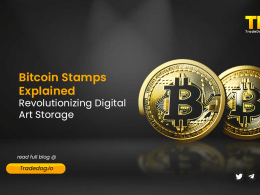Quick Links
In the world of financial markets, liquidity is the king and without it, the entire ecosystem would come to a grinding halt. It refers to a seamless conversion of assets into cash without driving any significant changes in the price. In the context of cryptocurrency, it refers to the ability to buy or sell a cryptocurrency quickly and easily without affecting its market price.
In the traditional space, there are intermediaries like banks, insurance companies and market makers which ensure there is enough liquidity in the market to facilitate smooth operations of financial activities like lending and borrowing, insurance policies and trading on exchanges. However, the nature of decentralized space eliminates the need for these intermediaries and this role is replaced by liquidity pools.
What are Liquidity Pools?
Liquidity Pool refers to a collection of funds locked in a smart contract. Any user who deposits his funds in a pool is called a liquidity provider and receives LP tokens representing his share of contribution in the pool along with the interest/fees payable to him. These LP tokens can be further traded by the users to earn additional rewards.
The liquidity pools are the backbone of the DeFi ecosystem and are essential to make the most of this exciting and rapidly evolving space.
Lending
Just like a bank accepts deposits and lends funds to the public, similarly users can deposit their funds to these pools in a smart contract which is further used to lend to borrowers against their collaterals.
Trading
It facilitates the smooth buying and selling of cryptocurrencies on decentralized exchanges which follow an AMM (Automated Market Maker) model. The price of the assets is adjusted by demand and supply in the pools which will be discussed in detail in the next section.
Insurance
Traditionally, insurance companies pay out the claims using the premiums paid by the subscribers, while in the DeFi space, the claims are paid off using the liquidity pools.
Though the primary use case of these pools involves AMM, some other use cases include minting synthetic assets, yield farming using LP tokens, tranching and more.
How does Liquidity Pool work?
Traditionally, the buying and selling of stocks is done through an order book model which is facilitated by market makers. This model keeps track of all the buying and selling orders and will accordingly match the orders based on price and quantity. While, in the case of decentralized exchanges, an automated market maker model is adopted to facilitate smooth trading activity.
The process begins with a depositor locking his funds in a pool. The majority of the pools require a user to deposit two tokens of equal value in the pool, for instance, ETH and USDT. As of the date of writing, 1 ETH equals 1866 USDT. So now a user will have to deposit 1 ETH and 1866 USDT to ensure both tokens of equal value are deposited in the pool. Users can swap ETH tokens for USDT and vice versa and the price for these cryptocurrencies is determined on the basis of the ratio of tokens maintained in the pools. This is called the automated market maker algorithm where each token swap results in a price adjustment of the cryptocurrencies. The price adjustment here depends on the size of the trade corresponding to the size of the pool. The greater the pool size as compared to the trade, the lesser the impact is on the price of the assets. This is one of the main reasons protocols incentivize their users to provide liquidity. Though a majority of pools have a two-token pool model, there are pools of up to 8 tokens as well.
The liquidity providers are issued LP tokens representing the proportion of value they have contributed to the pool. The trading fees earned by these pools for every transaction made are then distributed to liquidity providers as rewards. They can withdraw their funds at any time by burning these tokens and earning the principal value as well as the accrued fees. Moreover, they can earn additional rewards by further trading these LP tokens.
Advantages of Liquidity Pools
(I) Reduced Risk of Market Manipulation: Order book exchanges are more susceptible to manipulation as compared to AMM as it is managed by market makers who can manipulate market prices by fake order placement and wash trading.
(II) Lower Fees: Order book exchanges typically charge fees to both makers and takers. AMMs, on the other hand, usually only charge trading fees to takers, and those fees are typically lower than those charged by traditional exchanges.
(III) Lower Barrier to Entry: Traditional order book exchanges require market makers to provide liquidity by placing limit orders, which requires significant capital and market knowledge. In contrast, AMMs allow anyone to become a liquidity provider by depositing an equal value of two different tokens into a liquidity pool.
Risks and Challenges
(I) Impermanent Loss: Any change in the price of deposited tokens leads to an impermanent loss for the depositors. The proportion of loss is higher if there is a higher change in the price of the assets.
(II) Slippage: It refers to a difference in the expected price of the trade to the actual price. It usually happens when there is not enough liquidity to meet the trade order and in a volatile market.
(III) Smart Contract Risk/Bugs: The funds of the pool are locked in a smart contract which is vulnerable to attacks by hackers. The users can lose all their deposited funds due to an attack or bugs in the system.
(IV): Market Risk: Liquidity pools are exposed to market risk if the price of the token falls due to market volatility or other factors such as regulatory changes or hacking incidents.
Conclusion
Despite the risks of impermanent loss and slippage, users are bullish on the concept of liquidity pools and make it up by earning more through trading fees and by trading LP tokens. Moreover, with the innovation of directional liquidity pools by Maverick AMM, users can continue to provide liquidity & earn rewards and avoid impermanent loss at the same time by predicting the movement of the price of the assets. This model allows users to earn additional rewards and incentivizes them to continue contributing to these pools.









